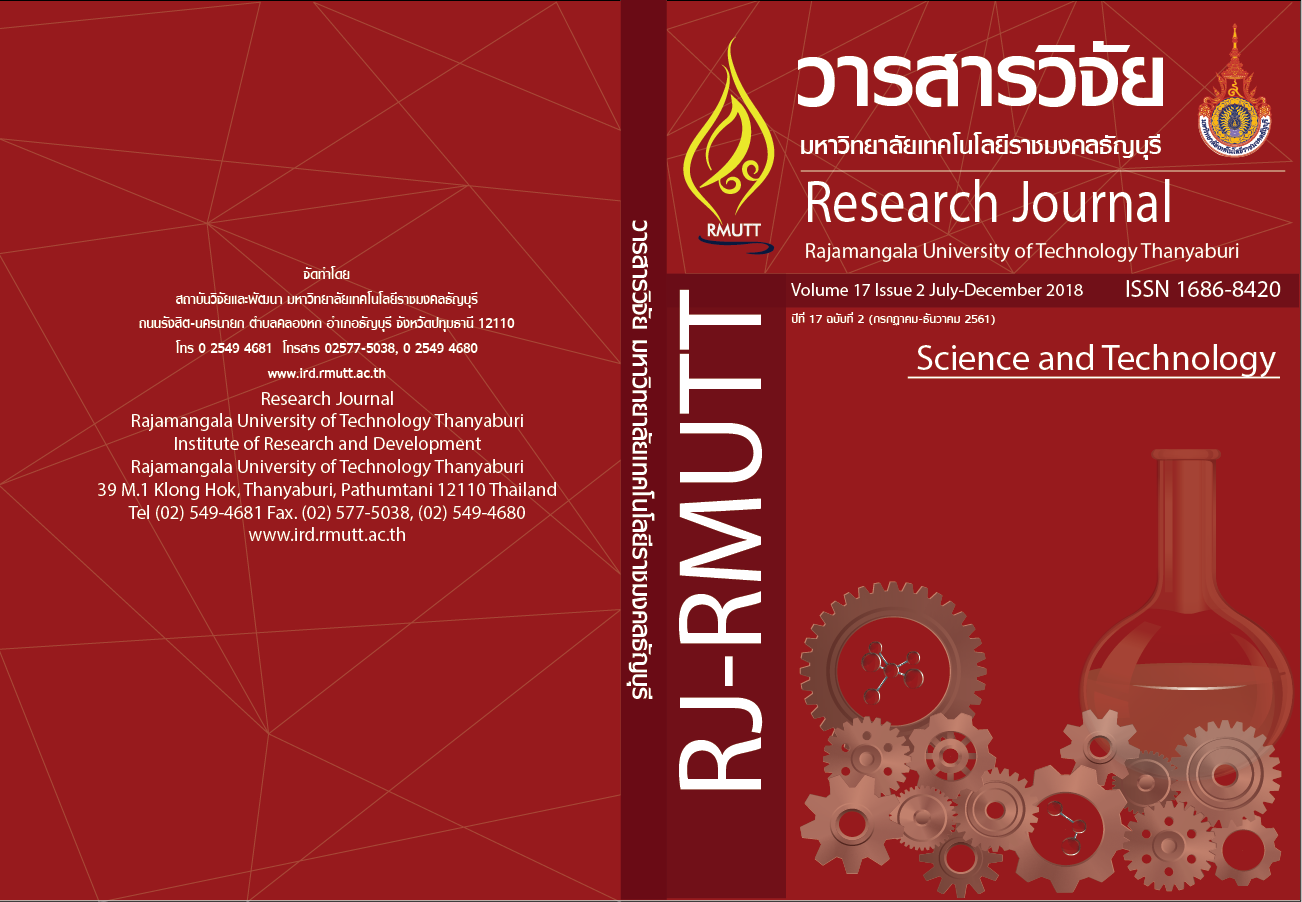Chlorine Concentration Control Machine for Vegetable Washing Process Based on Ohmic Heating Principle
Main Article Content
Abstract
Due to the fact that the analysis and control of the chlorine concentration in the vegetable wash-water used in the vegetable washing process in the food industry still require manpower and chemicals, the objectives of this research are therefore to design and develop an automatic choline concentration control machine to reduce the uses of such man-power and chemicals. The ohmic heating technique was applied to analyze the relationship between the electrical conductivity and the chlorine concentration of the vegetable wash-water. From the result, the increasing rate of the electrical conductivity was positively proportional to the concentration of chlorine. This relationship was used to develop a mathematical model for the prediction of the chlorine concentration which was programmed into the processing unit of the machine based on an Arduino platform equipped with the temperature, voltage and electric current sensors. The test results showed that the developed mathematical model correctly predicted and the machine precisely controlled the chlorine concentration (accuracy of about 90%). The results revealed that the uses of ohmic heating in the analysis and the automatic control of the chlorine concentration in the vegetable wash-water was possible.
Article Details

This work is licensed under a Creative Commons Attribution-NonCommercial-NoDerivatives 4.0 International License.
References
[2] สุวรรณ กาญจนภู, 2537. ล้างผักเพื่อลดพิษภัย. หมอชาวบ้าน 16 (181) (พิเศษ) :22.
[3] จอมขวัญ สุวรรณรักษ์ พุดกรอง พันธุ์อุโมงค์ และนิธิยา รัตนาปนนท์, 2557. ประสิทธิภาพของสารฆ่าเชื้อกรดเพอร์ออกซีแอซีติกและสารละลายโซเดียมไฮโพคลอไรต์ในการลดปริมาณจุลินทรีย์ที่ผิวของผักและผลไม้สดแกะสลัก. วารสารวิชาการและวิจัยมหาวิทยาลัยเทคโนโลยีราชมงคลพระนคร, 8(2), 92-106.
[4] Beuchat, L.R. 2000. Surface decontamination of fruits and vegetables eaten raw: a review. Center for Food Safety and Quality Enhancement, University of Georgia, Griffin, Georgia, USA.
[5] ไพฑูรย์ หมายมั่นสมสุข. 2553. การวิเคราะห์น้ำและน้ำเสียเบื้องต้น. สำนักวิจัยและพัฒนาสิ่งแวดล้อมโรงงาน.
[6] ไพฑูรย์ หมายมั่นสมสุข. 2556. การวิเคราะห์คุณภาพน้ำ. กรมโรงงานอุตสาหกรรม.


